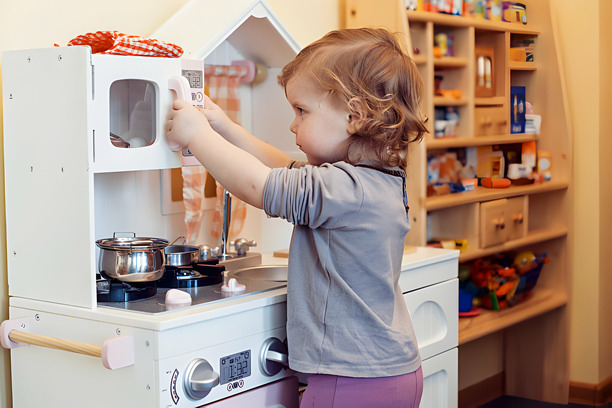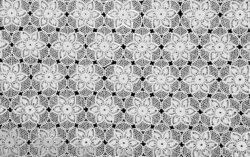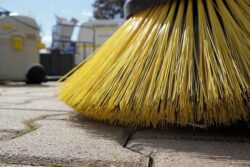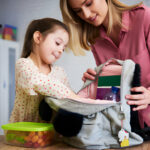
Your child’s play kitchen is a world of imagination and creativity, but it’s also a place that needs a bit of cleaning magic to keep it safe and fun. In this detailed guide, we’ll explore the ins and outs of cleaning and sanitizing your child’s play kitchen. From the tiny stovetops to the itty-bitty pots and pans, we’ve got simple and effective methods to ensure a sparkling and germ-free play space. Let’s dive into the world of make-believe cleanliness for your little one’s tiny culinary adventures.
See also our post on Cleaning Hacks for Busy Parents: Managing a Clean Home with Kids
Quick Cleanup After Playtime
Pick Up the Pieces
Start by picking up all the play kitchen pieces. Gather the pots, pans, utensils, and any toy food items. This makes it easier to clean the surfaces underneath.
Wipe Down Surfaces
Use a damp cloth to wipe down all the surfaces of the play kitchen. Get into the nooks and crannies where crumbs or spills might hide. Simple water is usually enough for everyday cleaning.
Check for Loose Parts
Inspect the play kitchen for any loose or detachable parts. If there are any, remove them for a more thorough cleaning. Pay special attention to knobs, buttons, and other interactive elements.
Dry Thoroughly
After wiping, make sure everything is dry. Damp surfaces can attract dust and may lead to mold growth. A quick once-over with a dry cloth ensures a clean and ready-to-play kitchen.
Sort and Organize
Encourage good habits by involving your child in sorting and organizing the play kitchen items. This not only teaches responsibility but also makes future cleanup sessions more enjoyable.
Deep Cleaning the Play Kitchen
Disassemble if Possible
If your child’s play kitchen has detachable parts, consider disassembling them for a more thorough clean. Check the manufacturer’s instructions for guidance on safe disassembly.
Soapy Water Solution
For plastic surfaces, a mild soapy water solution works wonders. Dip a cloth or sponge into the soapy water and wipe down all surfaces, including handles, doors, and any decorative elements.
Toothbrush for Detailing
Use a soft toothbrush for detailing intricate parts, corners, and crevices. This is especially useful for play kitchens with realistic details that can collect dirt over time.
Natural Cleaning Agents
Consider natural cleaning agents like white vinegar or baking soda for tougher spots or stains. These are child-safe and effective at tackling stubborn grime without harsh chemicals.
Sanitizing Spray
After cleaning, use a child-friendly sanitizing spray. Look for one with natural ingredients, and give a light mist over the play kitchen surfaces. Allow it to air dry for added cleanliness.
See also our post on How to Properly Clean and Disinfect the Kitchen Sink
Cleaning Toy Utensils and Dishes
Separate from Play Food
Separate toy utensils and dishes from play food items. This makes it easier to clean and ensures that no hidden crumbs or dirt compromise the play kitchen’s hygiene.
Soak in Soapy Water
Soak utensils and dishes in a basin of soapy water. Use a gentle scrub brush to remove any food-like residue or sticky substances. Ensure thorough cleaning inside utensils like cups and pots.
Rinse and Air Dry
After soaking, rinse each item under running water to remove soap residue. Place them on a clean towel or drying rack to air dry completely before returning them to the play kitchen.
Dishwasher-Friendly Materials
Check if the toy utensils and dishes are dishwasher-friendly. If they are, consider placing them in the dishwasher for an extra sanitizing boost. Always follow the manufacturer’s recommendations.
Periodic Inspection
Periodically inspect toy utensils and dishes for signs of wear and tear. Replace any items that are damaged or show excessive wear to maintain a safe play environment.
How to Clean Fabric Accessories and Play Food
Machine Washable Fabrics
If your child’s play kitchen includes fabric items like aprons or oven mitts, check if they are machine washable. Use a gentle cycle with mild detergent for a thorough clean.
Handwash Soft Toys
For soft toy play food items, handwash them in soapy water. Gently scrub any spots or stains with a soft brush. Rinse thoroughly and let them air dry completely.
Check for Manufacturer Guidelines
Always check the manufacturer’s guidelines for cleaning fabric accessories and play food. Some may have specific instructions to preserve their quality.
Rotate Fabric Items
Rotate fabric accessories and play food periodically to ensure even wear. This also prevents certain items from becoming favorites and wearing out faster than others.
Store in Clean Containers
When not in use, store fabric accessories and play food in clean containers or fabric bags. This protects them from dust and keeps the play kitchen looking tidy.
Maintaining Electronics and Lights
Battery Check
If your child’s play kitchen has electronic features, check the batteries regularly. Replace them as needed to ensure that lights and sounds function correctly.
Cleaning Electronic Components
Use a dry cloth to wipe down electronic components. Avoid using water or cleaning solutions directly on electronic parts to prevent damage.
Contact Points
Clean battery contacts with a soft, dry brush to remove any dust or residue. This ensures a proper connection and prevents malfunctions.
Gentle Cleaning for Lights
For play kitchens with light features, gently clean the plastic or glass surfaces with a soft cloth. Avoid abrasive materials that may scratch or damage the lights.
Store in a Cool, Dry Place
When not in use, store the play kitchen in a cool, dry place. Avoid exposing electronic components to extreme temperatures or humidity to prolong their lifespan.
See also our post on Restaurant Kitchen Cleaning: Maintaining Hygiene Standards
Regular Inspection for Safety
Check for Loose Parts
Regularly inspect the play kitchen for loose or broken parts. Tighten any screws or bolts and replace any components that are damaged or pose a safety risk.
Monitor Wear and Tear
Keep an eye on the overall condition of the play kitchen. Look for signs of wear and tear, such as chipped paint or cracks. Address these issues promptly for continued safety.
Sturdy Construction
Ensure that the play kitchen remains sturdy. Tighten any loose joints or connections to prevent wobbling or tipping during play.
Sharp Edges and Corners
Check for sharp edges or corners that may have developed over time. Use a fine sandpaper to smooth any rough areas, ensuring that the play kitchen remains safe for little hands.
Child-Proofing Measures
Implement child-proofing measures if necessary. This may include adding soft edge protectors to corners or ensuring that doors and drawers close securely.
Ways to Encourage Clean Play Habits
Teach Cleanup Routine
Encourage your child to participate in a cleanup routine after playtime. This not only maintains a clean play kitchen but also teaches valuable habits.
Positive Reinforcement
Offer positive reinforcement for good cleaning habits. Praise your child for putting toys back in their places and keeping the play kitchen tidy.
Set a Schedule
Establish a regular cleaning schedule for the play kitchen. This could include a more thorough cleaning session on a weekly or bi-weekly basis.
Storage Solutions
Provide storage solutions that make cleanup easy for your child. Labeled bins or baskets can help them organize play kitchen items independently.
Lead by Example
Lead by example and show enthusiasm for keeping things clean. When children see adults valuing cleanliness, they are more likely to adopt similar habits.
See also our post on How to Clean Your Baby’s Nursery: Tips for a Healthy Environment
Conclusion
Let your little chefs continue their culinary adventures in a sparkling and safe play kitchen that sparks joy and learning. In conclusion, keeping your child’s play kitchen clean and sanitized is a simple yet crucial aspect of maintaining a safe and enjoyable play environment. From quick post-play wipe-downs to deep cleaning sessions, these strategies ensure that your child’s culinary adventures remain both imaginative and hygienic. By incorporating these tips into your routine, you contribute to a healthy play space that nurtures creativity and fosters good habits.







